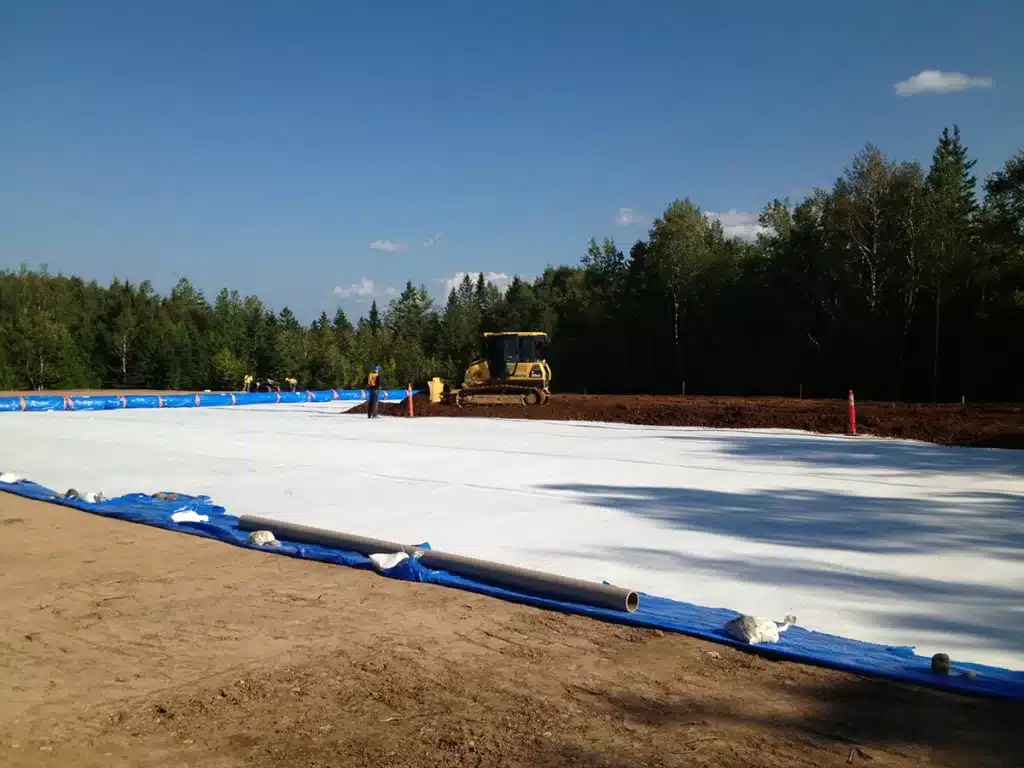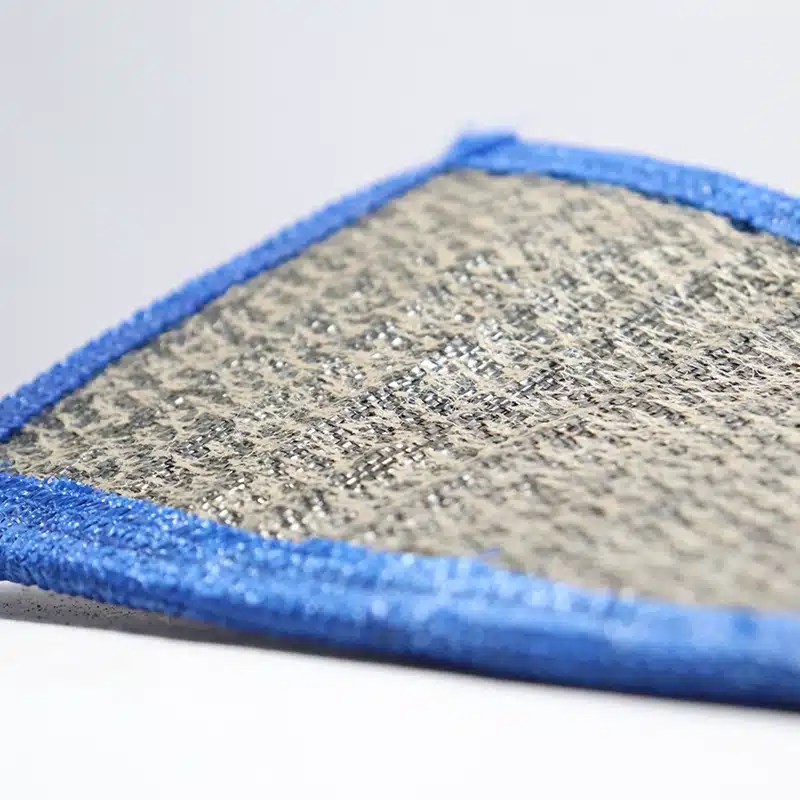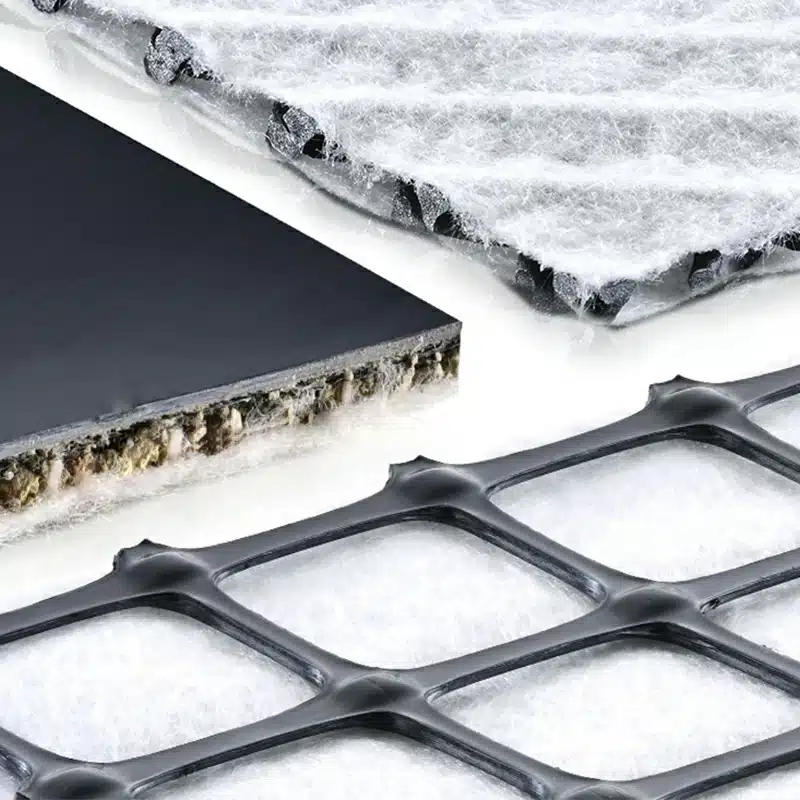+86-159 9860 6917
info@geofantex.com
geofantex@gmail.com
+86-400-8266163-44899
Geosynthetic materials have revolutionized the way we protect and maintain our coastal environments. This article delves into the applications of geosynthetic materials, with a specific focus on geotextiles in marine work. We explore the requirements for successful geosynthetic marine applications and address four key questions to provide a comprehensive understanding of this innovative technology.

What are the applications of geosynthetic materials?
Geosynthetic materials are highly versatile and used in a variety of applications due to their unique properties like durability, flexibility, and resistance to environmental factors. Here are some common applications:
- Reinforcement: Geosynthetics are used to reinforce soil in retaining walls, embankments, and slopes, enhancing their stability and load-carrying capacity. They help distribute loads over a wider area, reducing stress on underlying soils.
- Erosion Control: In erosion control, these materials are employed to protect soil surfaces from wind and water erosion. They are widely used in areas like riverbanks, roadside slopes, and beaches.
- Drainage: Geosynthetics serve as excellent drainage systems, facilitating the removal of water from soils or other materials. They are used on roads, behind retaining walls, and in sports fields to prevent waterlogging and improve stability.
- Containment: In environmental applications, geosynthetics are used for containment to prevent contamination of surrounding areas. They are essential in landfills, wastewater treatment plants, and for secondary containment around chemical storage facilities.
- Filtration: Acting as filters, these materials allow water to pass while preventing soil particles from migrating. This property is crucial in maintaining soil stability and preventing the clogging of drainage systems.
- Protection: Geosynthetics protect geomembranes in landfills and reservoirs from puncture by underlying rocks or other materials. They help in distributing loads and reducing local stress.
- Separation: These materials can separate two layers of soil with different properties, such as a road base and a subgrade, preventing the mixing of different soils and enhancing the structural integrity of constructions.
- Waterproofing: They are used in the construction of tunnels, underground structures, and roofing to prevent water ingress, thereby ensuring structural longevity and reducing maintenance costs.
- Asphalt Overlay: Geosynthetics are used in pavement rehabilitation to prevent cracking and rutting of roads, thereby extending the pavement lifecycle.
These diverse applications demonstrate how integral geosynthetic materials are to modern construction and environmental protection projects.
What is geotextile for marine work?
Geotextiles are used in marine construction projects primarily to improve the performance and longevity of the structures. They serve as a crucial component in protecting coastal and underwater environments.
Functions of Geotextile
- Filtration: Allows water to pass through while preventing soil particles from migrating, which helps maintain the stability of marine structures.
- Separation: Prevents the mixing of different soil layers, which is essential in maintaining the integrity of construction materials.
- Reinforcement: Enhances the strength and stability of marine structures by providing additional support to soil and other materials.
- Protection: Shields underwater pipelines, cables, and other structures from damage caused by soil erosion, mechanical impact, and other environmental factors.
Applications of Geotextile in Marine Construction
- Coastal Protection: Used in the construction of seawalls, breakwaters, and revetments to protect shorelines from erosion and storm surges.
- Dredging Operations: Utilized to contain dredged materials, preventing the spread of sediments into surrounding waters.
- Underwater Pipelines and Cables: Geotextiles are employed to cushion and protect these structures from external damage.
- Harbors and Ports: Applied in the construction of wharves, jetties, and docking facilities to provide stability and support to the underwater foundations.
- Artificial Reefs: Used in the creation of artificial reefs to promote marine life by providing a stable substrate for the growth of corals and other organisms.

How do geotextiles improve coastal resilience?
Geotextiles play a crucial role in improving coastal resilience by providing structural support and reducing erosion. They help to disperse wave energy, stabilize shorelines, and prevent the loss of valuable land due to coastal erosion. Geotextiles also promote the growth of vegetation, further enhancing the ecological health of coastal areas.
Can geosynthetic marine applications be eco-friendly?
Yes, geosynthetic marine applications can be eco-friendly when designed and implemented with sustainability in mind. Using biodegradable or recyclable materials and promoting the growth of native vegetation are some of the ways to minimize the environmental impact. Additionally, these applications can help protect delicate coastal ecosystems from erosion and damage.
In conclusion, geosynthetic materials, especially geotextiles, have become indispensable tools in enhancing coastal resilience and protecting marine environments. When used with proper planning, high-quality materials, skilled installation, and regular maintenance, these applications offer eco-friendly solutions to pressing coastal challenges. The versatility and effectiveness of geosynthetic marine applications make them a key component of sustainable coastal development.



Get Free Sample
We’ll respond as soon as possible(within 12 hours)






















